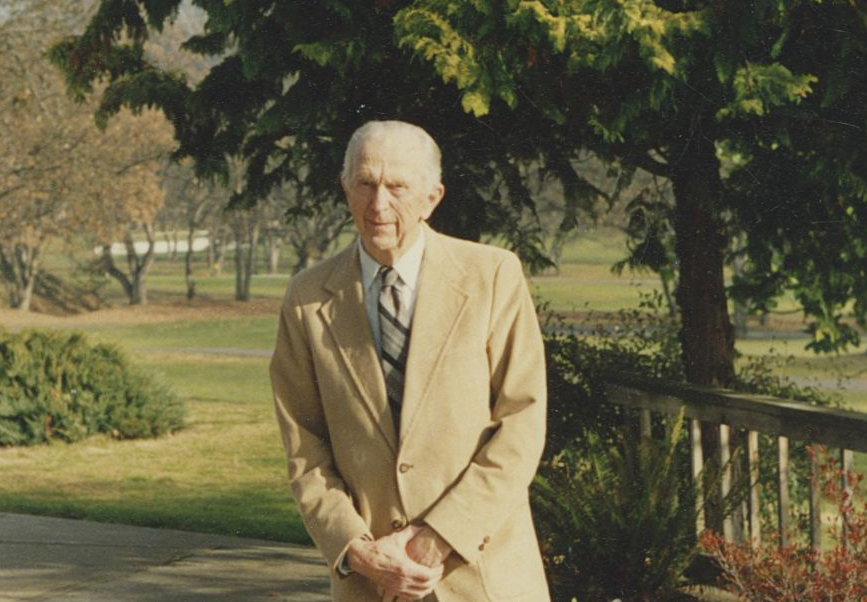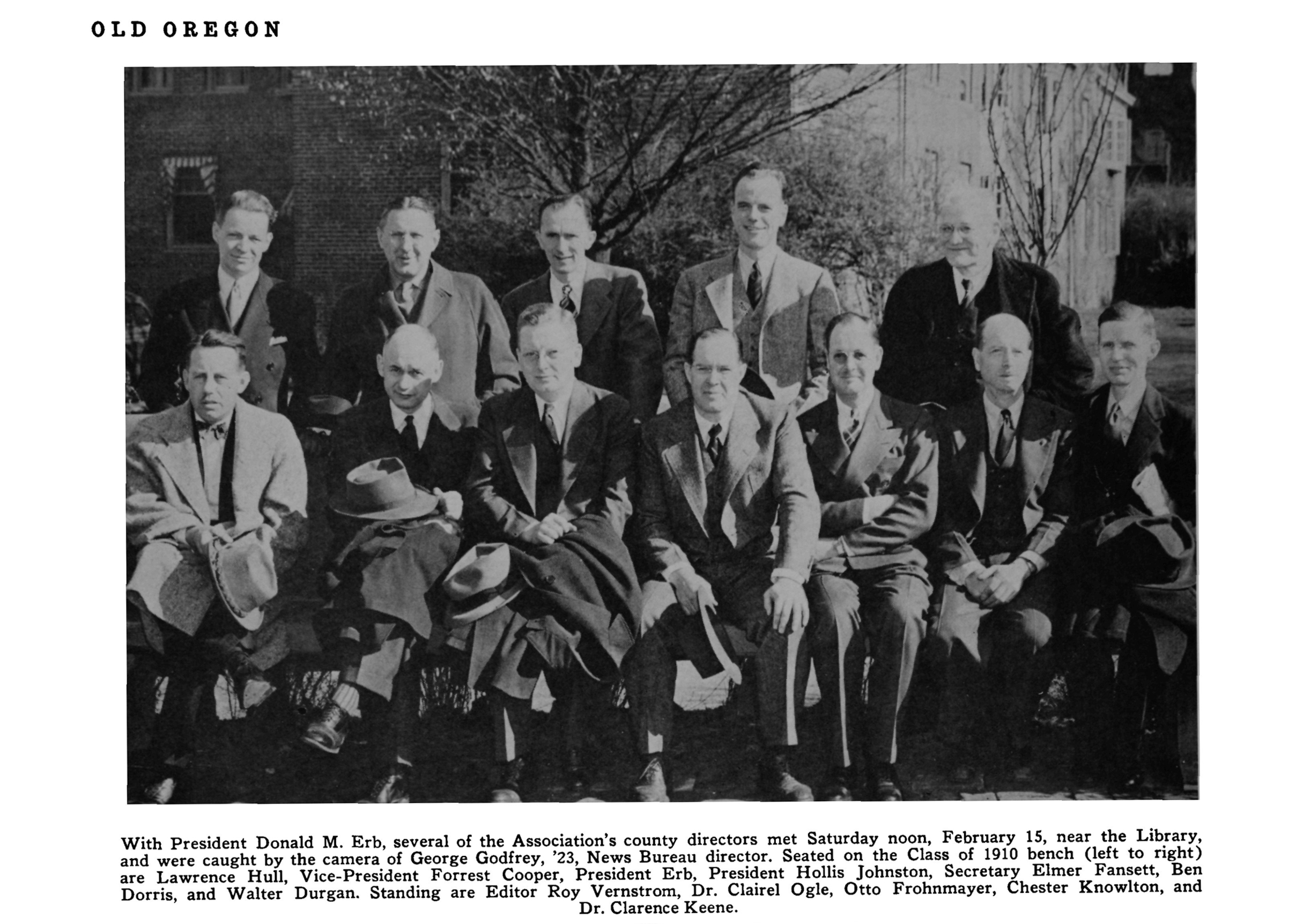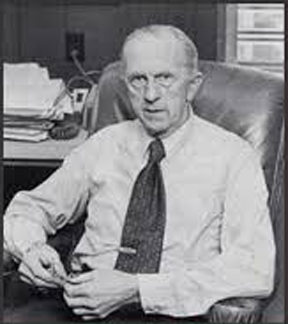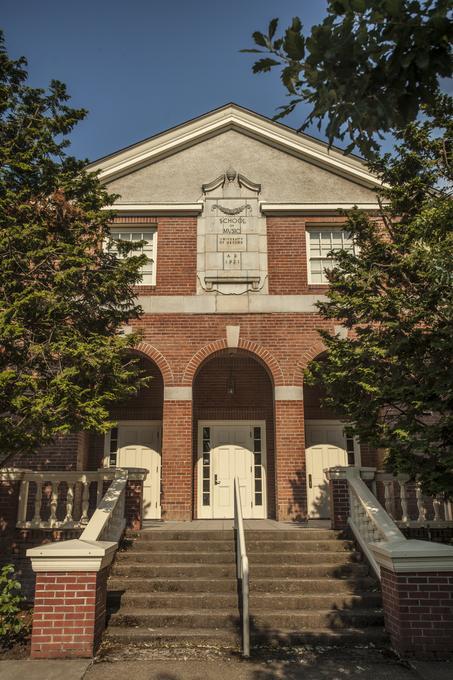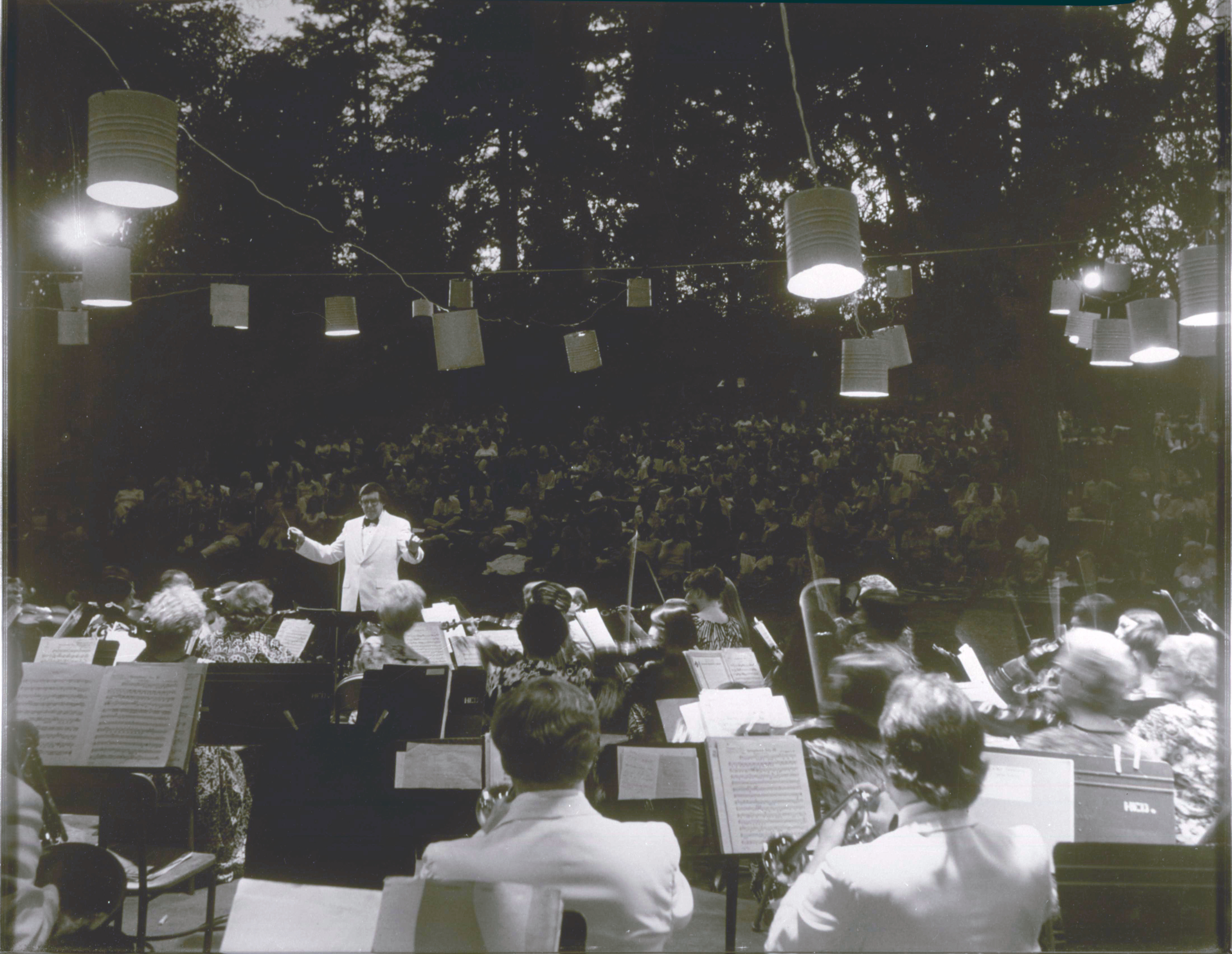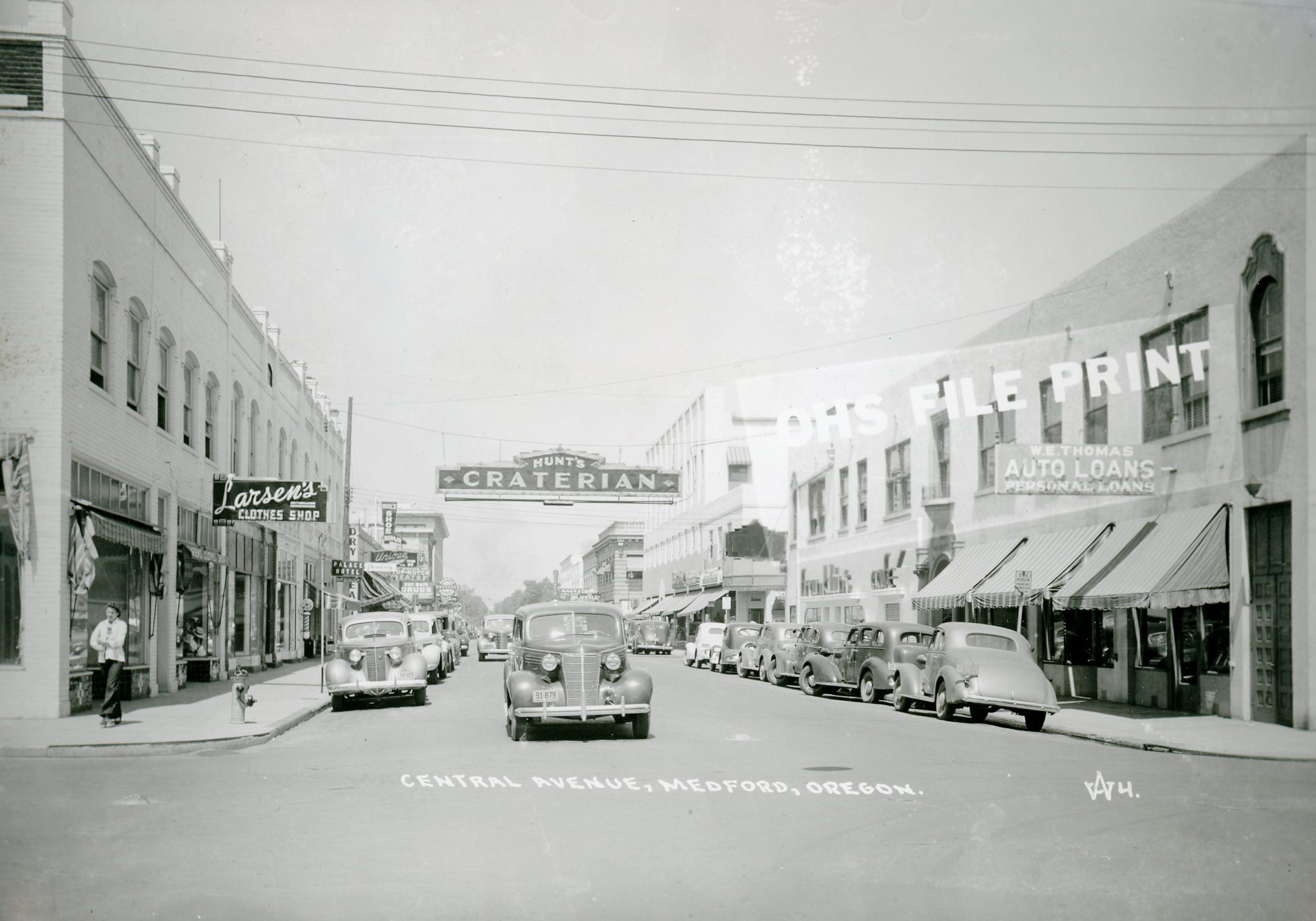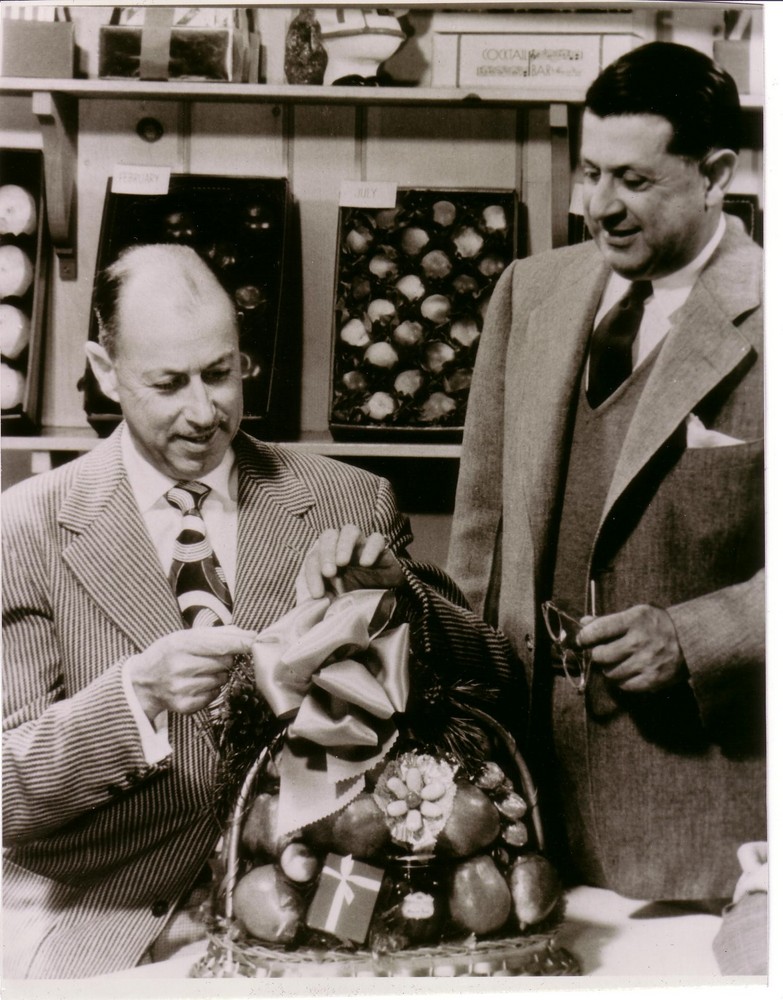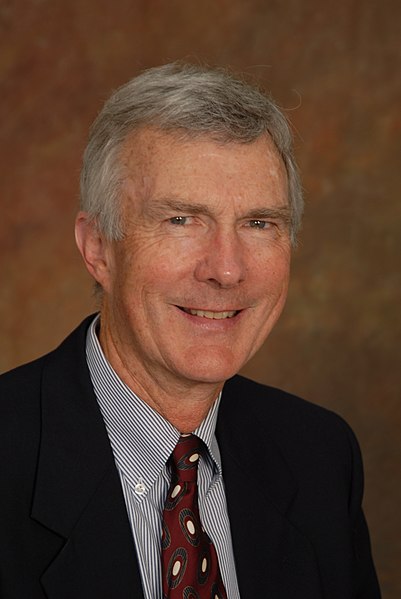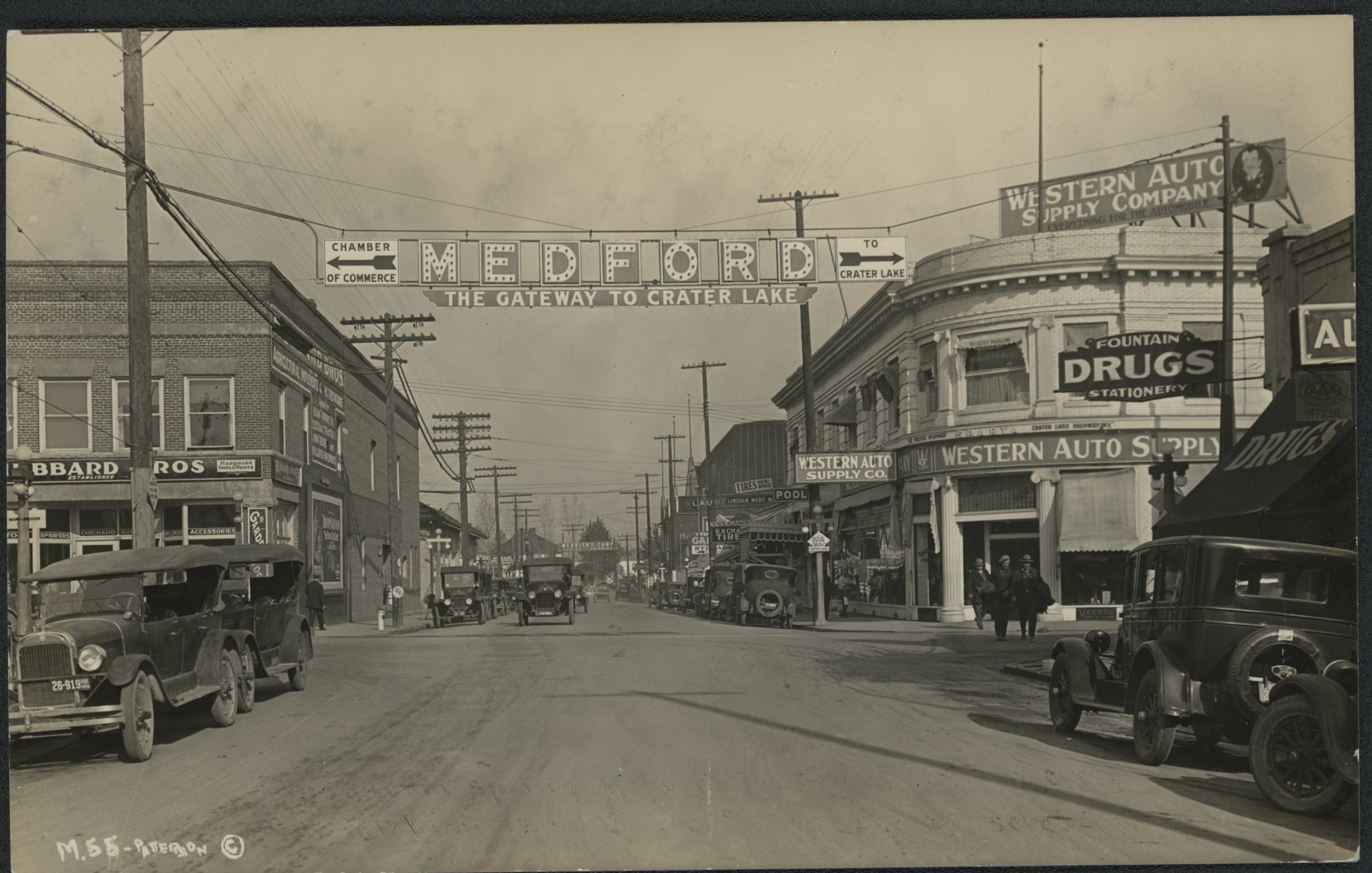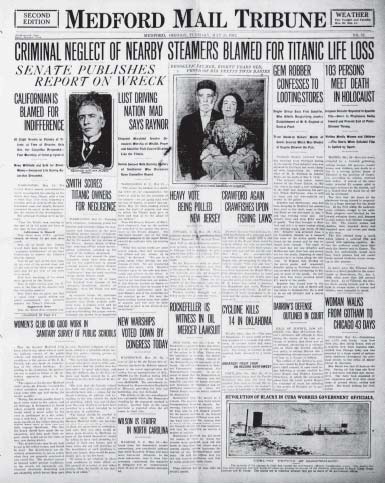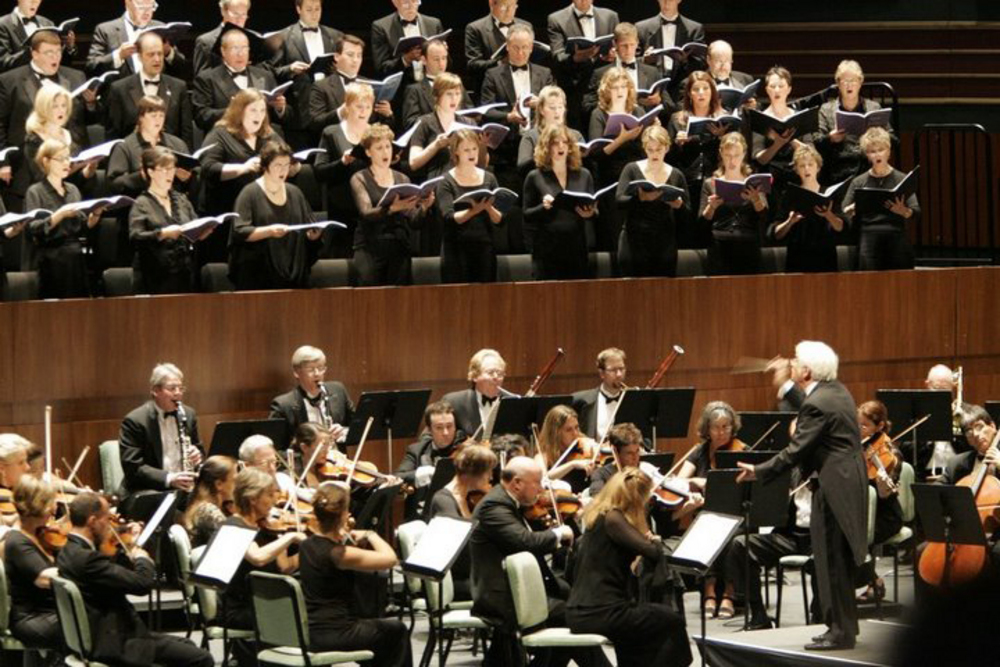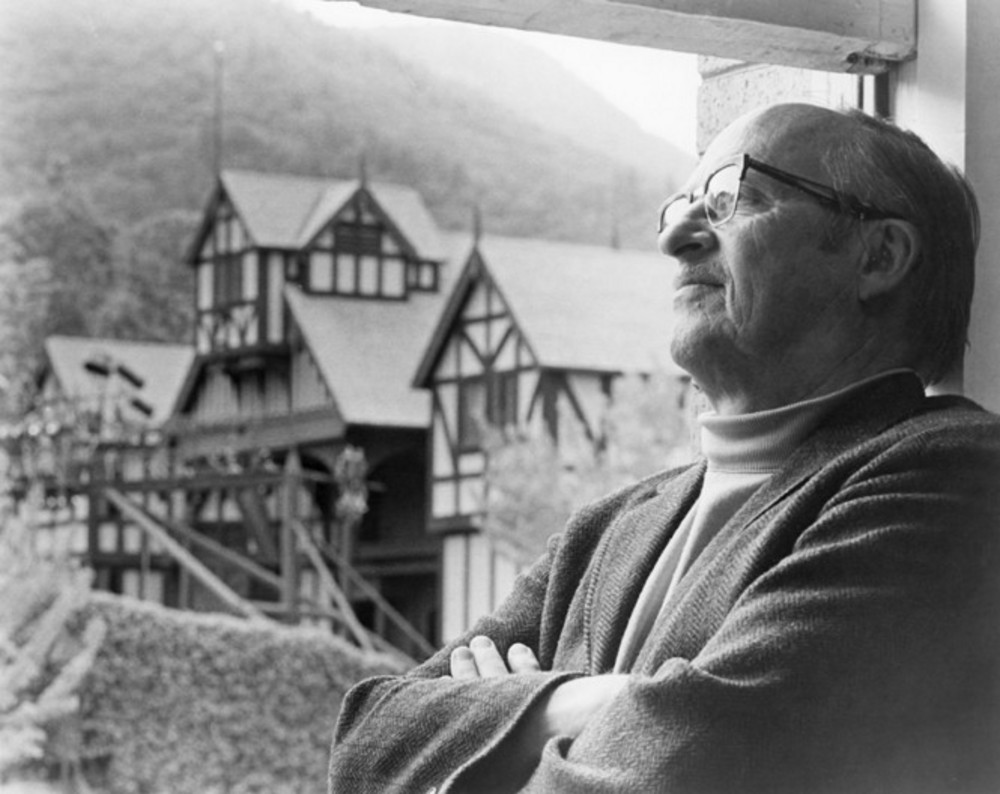Otto Frohnmayer was a prominent attorney, civic leader, and philanthropist who played an important role in Medford’s transformation from a small rail and fruit-growing city into the region’s medical and financial hub. Over seven decades, he and his family helped bring art, culture, and a strong sense of civic pride to many Southern Oregon projects.
Otto John Frohnmayer was born in Germany on October 22, 1905, the son of Bernard and Sophie Yetter Frohnmayer. When Otto was an infant, the family immigrated to Oregon, where Bernard worked as a watchmaker and toolmaker. Otto was educated in Portland public schools, graduating from Washington High School before enrolling at Multnomah College and then transferring to the University of Oregon, where he graduated with a B.S. degree in 1929. Frohnmayer earned a law degree from the University of Oregon Law School in 1933, working odd jobs that included a stint as a hotel bellhop. He then moved to Medford, where he joined the successful law practice of Porter J. Neff as an associate. He married MarAbel Braden, a music teacher from Albany, in 1936, and the couple purchased the “quaint 1920s bungalow” they lived in for the rest of their lives.
Frohnmayer came to represent most of the region’s powerful and influential institutions, including Harry & David, an orchard company that became nationally famous for its “Fruit-of-the-Month” club mail order business, and the Medford Mail Tribune, the locally owned newspaper. He was elected president of the Southern Oregon Bar Association in 1940. After succeeding Neff as the firm’s principal lawyer in 1959, he continued his practice from law offices above the Craterian Theater in the Cooley–Neff Building in downtown Medford.
Frohnmayer took an active role in civic and charitable organizations in Southern Oregon. He served a term on the Medford School Board and played a key role in the creation of the Rogue Valley Memorial Hospital (now the Asante Rogue Regional Medical Center), chairing a group of two hundred local leaders to secure $2 million in funding for hospital construction. He helped establish Mercy Flights, the first nonprofit air-ambulance service in the nation, and served on numerous civic boards, including the Medford YMCA and the United Way. He and MarAbel Frohnmayer were ardent supporters of the arts, and both were on the board of directors of the Oregon Bach Festival (1975–1978).
A lifelong Republican, Frohnmayer played a key role in Mark O. Hatfield’s political campaigns, chairing his Southern Oregon committees. He led a statewide fundraising campaign in the 1980s to purchase a private residence in Salem and make it into Mahonia Hall, the official residence of Oregon’s governor. In 1994, Frohnmayer and his law partners moved their offices and donated the Cooley–Neff Building to the Rogue Valley Arts Association. The Craterian Theatre was renovated and opened in 1997 as the Craterian Ginger Rogers Theater (now the Craterian Theater at the Collier Center for the Performing Arts).
Widely hailed as Medford's First Citizen, Otto Frohnmayer died on January 31, 2000. “In seven decades of public service,” the Mail Tribune wrote, Frohnmayer “helped transform Medford from a sleepy logging and orchard town into the bustling hub of Southern Oregon.” MarAbel Frohnmayer served on the boards of the Oregon Shakespeare Festival, the Britt Music Festival, and the Rogue Valley Opera; helped found the Rogue Valley Symphony; and was the first president of the Rogue Valley Chorale. She died on October 12, 2003. The MarAbel B. Frohnmayer Music Building at the University of Oregon was named in her honor in 2005.
Otto and MarAbel Frohnmayer had four children: Mira and Philip, award-winning university music professors and performers; John, chair of the National Endowment for the Arts (1989–1992); and David, an Oregon legislator (1975–1981), Oregon attorney general (1981–1991) and gubernatorial candidate (1990). David Frohnmayer taught law at the University of Oregon (1971–1981) and served as the university’s president from 1994 until 2008.
-
![]()
Otto J. Frohnmayer, 1989.
Oregon Historical Society Research Library, SR1215_Image01 -
![]()
Meeting of the U. of O. Alumni Association, 1941; Otto Frohnmayer, standing, middle..
Courtesy Old Oregon Alumni Magazine, Vol. 22, UO
-
![]()
Otto Frohnmayer.
Courtesy University of Oregon
-
![]()
MarAbel Frohnmayer Music Building, University of Oregon, 2015.
Courtesy University of Oregon Libraries
Related Entries
-
![Britt Music Festival]()
Britt Music Festival
When the Britt Music Festival opened in Jacksonville, Oregon, on August…
-
![Craterian Ginger Rogers Theater at the Collier Center]()
Craterian Ginger Rogers Theater at the Collier Center
When fourteen-year-old Virginia Katherine McMath, better known as Ginge…
-
Harry & David/Bear Creek Orchards
Harry & David, the marketing brand for Medford's Bear Creek Corporation…
-
![John Edward Frohnmayer (1942-)]()
John Edward Frohnmayer (1942-)
John Edward Frohnmayer is a lawyer, writer, and arts leader who served …
-
![Medford]()
Medford
Medford, the county seat of Jackson County, was platted in 1883 in the …
-
![Medford Mail Tribune]()
Medford Mail Tribune
For over a hundred years, the Medford Mail Tribune argued against what …
-
![Oregon Bach Festival]()
Oregon Bach Festival
In the summer of 1970, two young choral conductors—one from Stuttgart, …
-
![Oregon Shakespeare Festival]()
Oregon Shakespeare Festival
The Oregon Shakespeare Festival (OSF), under the leadership of Angus L.…
Related Historical Records
Map This on the Oregon History WayFinder
The Oregon History Wayfinder is an interactive map that identifies significant places, people, and events in Oregon history.
Further Reading
Capitol’s Who’s Who for Oregon, 1948-1949. Salem, Ore.: Capitol Publishing Company), 1948.
Freeman, Mark. “Frohnmayer Leaves Civic Legacy.” Medford Mail Tribune, January 31, 2000, 1A.
Heltzel, Ellen Emery. “First Family of Medford- The Frohnmayers Have Built a Statewide Legacy,” Oregonian, November 25, 1984, B:1.

